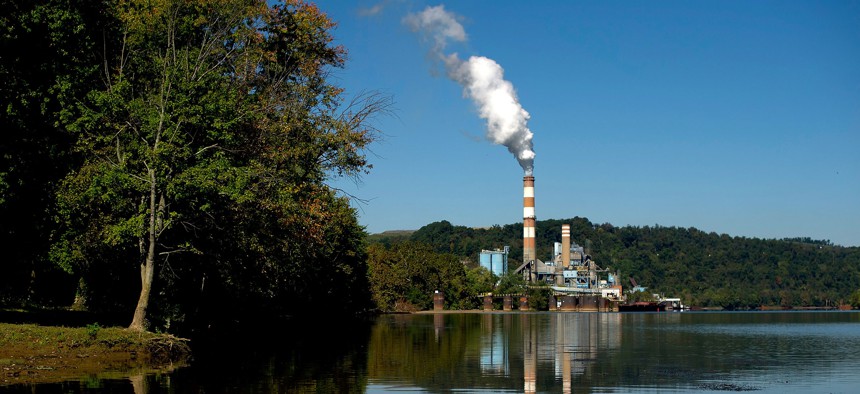Environment
Opinion: To save our climate, the fight tor RGGI must continue
Gov. Josh Shapiro must pull out all the stops to preserve this essential tool to fight global warming.

A plume of exhaust extends from the Mitchell Power Station, a coal-fired power plant built along the Monongahela River, 20 miles southwest of Pittsburgh Jeff Swensen/Getty Images
Pennsylvania’s best shot at meaningful action on climate change now rests in the hands of one individual. The Commonwealth Court just blocked Pennsylvania from joining the Regional Greenhouse Gas Initiative, a carbon emissions cap-and-invest program with a proven track record of curbing emissions from the energy sector. Now, it’s up to Gov. Josh Shapiro to appeal that decision and send the case to the Pennsylvania Supreme Court. It’s our last chance to stand up to the fossil fuel industry and ensure Pennsylvania does its part in curbing the devastating effects of climate change now and for generations to come.
Pennsylvania is the country’s fourth-largest emitter of carbon dioxide. We have an opportunity – and a responsibility to work to reduce those emissions in a way that benefits families and communities across the state. RGGI offers an opportunity to do exactly that. It’s a proven, market-driven solution that incentivizes regulated power plants to decrease emissions while requiring them to pay their fair share for the emissions they do produce. Proceeds from these carbon allowances would go into the state’s Clean Air Fund to support reducing energy costs, clean energy projects and other climate change mitigation efforts.
Pennsylvania would be the 12th state to enter into RGGI, joining other states that have raised more than $6 billion while cutting their carbon emissions by more than half. Since then-Gov. Tom Wolf’s executive order officially calling for Pennsylvania to join RGGI in April 2022, we’ve missed out on more than $1.5 billion in RGGI proceeds. That’s real money that could have improved the lives of Pennsylvania residents and the health of our environment.
Instead, fossil fuel interests have opposed Pennsylvania’s participation in RGGI at every step. They claim that RGGI proceeds constitute a tax. That claim is a fundamentally flawed argument that deserves to be debated before the state’s highest court.
But first, Shapiro must appeal the Commonwealth Court’s decision. Shapiro understands what’s at stake – he recognizes the tremendous economic and environmental opportunity that curbing emissions in Pennsylvania represents. In fact, the diverse RGGI working group appointed by Shapiro agreed that a cap-and-invest program like RGGI is the best approach to cut carbon dioxide pollution, create more certainty for families on utility costs and create sustainable jobs in communities long dependent on the fossil fuel industry.
Meanwhile, the warnings around climate change grow louder and more dire with each passing day. The latest National Climate Assessment is the most comprehensive and alarming yet, with a deeper look at the far-ranging effects of climate change on our economy and our society. To call the report’s findings unsettling would be a significant understatement. Climate change is making life more expensive. It’s making people sick. It’s threatening our culture and our way of life.
The assessment’s recommendations are clear: We have to do more, and every effort helps. Joining RGGI would create an immediate impact and move the needle on climate change. We have to fight for RGGI and its potential to protect future generations. We’re counting on Shapiro to make it happen.
Tell Gov. Shapiro to make Pennsylvania’s future a priority. Tell Shapiro to make polluters pay their fair share. Tell Shapiro to appeal this decision and make RGGI a reality in Pennsylvania.
Joseph Otis Minott is the president of the Clean Air Action Fund.
NEXT STORY: Opinion: The pressure is on to improve Pennsylvania’s water infrastructure
